Differences between Reverse-Mounted and Stacked-Lenses for Macro-Photography?
Jan 18, 2013 14:41:14 #
FAQ: Differences between Reverse-Mounted and Stacked-Lenses for Macro?
Reverse-Mounted Lens: A standard lens is mounted to camera, front element inward and rear element facing outward. A special camera-to-filter thread mount is required. Approximately 28-mm to 35-mm manual lenses work best. See images #1 & #2.
Stacked-Lenses: A longer normal lens, or longer macro lens, is mounted to camera, and a shorter lens is reverse-mounted to longer lens. An inexpensive "reversing ring" is required between lenses. Approximately a 50-mm lens reversed on 100-mm lens works best, providing a 2:1 to 3:1 magnification. See images #3 & #4.
For both the Reverse-Mounted Lens and Stacked-Lenses photography, good illumination is required.
MFD = Minimum Focusing Distance; DoF = Depth of Field
Determining Reverse-Mounted Lens Magnification
The best method of determining magnification, is to shoot a photograph of a metric ruler, then divide the mm width of camera sensor by the mm measurement captured on image.
Calculation for a Reverse-Mounted Lens on tubes
The magnification of a Reverse-Mounted Lens on tubes = the magnification of the reverse-Mounted Lens (alone) + the mm length of the total extension, divided by the focal length of the lens. A photograph of a metric ruler will confirm: divide the mm width of cameras sensor by the mm measurement captured on image.
Math for Stacked-Lenses Magnification
For non-macro lenses, the simple formula is the focal length of the lens mounted to the camera body, divided by the focal length of the reversed lens. A 50-mm lens reverse-mounted to a 100-mm lens will deliver 2:1 magnification at MFD. For a macro lens, the math changes slightly. Because of the macro capability to focus very close, add 1 to the equation: it now becomes 1+(100/50), which equals 3:1 at MFD.
Macro lenses work best up to life-size, and with extension tubes, up to 2x life-size.
Depending on the set-up, a reverse-mounted lens above 1.5x magnifications yields a MFD between 1 to 3-inches. Comparatively, a 180-mm macro lens on a full set of extension tubes, yields a WD of 6-inches to about 4-feet.
Advantages and Disadvantages of a Reverse-Mounted Lens
It has been reported by accomplished macro-photographers, that a single Reverse-Mounted Lens resolves (focuses) better than Stacked-Lenses. A single Reverse-Mounted Lens has a greater WD than do Stacked-Lenses, even if it is only a 1/2-inch or so. When a WD become as short as they do with Reverse-Mounted Lens photography, even fractions of inches can make a difference.
The major drawback to the Reverse-Mounted Lens set-up, is that electronic communication between camera & lens is lost. To control aperture, the lens must be physically stopped-down before photo is captured. This can be done initially, but that greatly reduces available light for focusing. Or with a special adapter, aperture closure can be accomplished after focusing, but before photo capture (see image #5).
Another noted disadvantage is lens flare. this often exhibits as a "soft spot", lighter in color than the rest of the photograph sometimes in an important area of the subject. The flare problem can range from moderate to severe, in which case, it cannot be fixed in PP. Often, the lightness or darkness of the subject and/or its background, can greatly effect this phenomena. This is a problem rarely encounter using Stacked-Lenses. Lens flair is caused by light shining directly onto exposed lens surface.
Advantages and Disadvantages of Stacked Lenses.
Stacked-lenses have an advantage for ease of use. A 50-mm stack-mounted to a 100mm macro lens (focused to infinity), will yield 2:1 magnification, and when at MFD, will yield 3:1 magnifications. Another advantage of Stacked-Lenses is that both lenses are wide open while composing, then the longer lens automatically closes down for photography. Auto-Focus is also still functional. One disadvantage is the obvious need for two lenses, their combined length, and combined weight. Speedlight illumination must be positioned directly to subject.
Reverse-Mounted Lens: A standard lens is mounted to camera, front element inward and rear element facing outward. A special camera-to-filter thread mount is required. Approximately 28-mm to 35-mm manual lenses work best. See images #1 & #2.
Stacked-Lenses: A longer normal lens, or longer macro lens, is mounted to camera, and a shorter lens is reverse-mounted to longer lens. An inexpensive "reversing ring" is required between lenses. Approximately a 50-mm lens reversed on 100-mm lens works best, providing a 2:1 to 3:1 magnification. See images #3 & #4.
For both the Reverse-Mounted Lens and Stacked-Lenses photography, good illumination is required.
MFD = Minimum Focusing Distance; DoF = Depth of Field
Determining Reverse-Mounted Lens Magnification
The best method of determining magnification, is to shoot a photograph of a metric ruler, then divide the mm width of camera sensor by the mm measurement captured on image.
Calculation for a Reverse-Mounted Lens on tubes
The magnification of a Reverse-Mounted Lens on tubes = the magnification of the reverse-Mounted Lens (alone) + the mm length of the total extension, divided by the focal length of the lens. A photograph of a metric ruler will confirm: divide the mm width of cameras sensor by the mm measurement captured on image.
Math for Stacked-Lenses Magnification
For non-macro lenses, the simple formula is the focal length of the lens mounted to the camera body, divided by the focal length of the reversed lens. A 50-mm lens reverse-mounted to a 100-mm lens will deliver 2:1 magnification at MFD. For a macro lens, the math changes slightly. Because of the macro capability to focus very close, add 1 to the equation: it now becomes 1+(100/50), which equals 3:1 at MFD.
Macro lenses work best up to life-size, and with extension tubes, up to 2x life-size.
Depending on the set-up, a reverse-mounted lens above 1.5x magnifications yields a MFD between 1 to 3-inches. Comparatively, a 180-mm macro lens on a full set of extension tubes, yields a WD of 6-inches to about 4-feet.
Advantages and Disadvantages of a Reverse-Mounted Lens
It has been reported by accomplished macro-photographers, that a single Reverse-Mounted Lens resolves (focuses) better than Stacked-Lenses. A single Reverse-Mounted Lens has a greater WD than do Stacked-Lenses, even if it is only a 1/2-inch or so. When a WD become as short as they do with Reverse-Mounted Lens photography, even fractions of inches can make a difference.
The major drawback to the Reverse-Mounted Lens set-up, is that electronic communication between camera & lens is lost. To control aperture, the lens must be physically stopped-down before photo is captured. This can be done initially, but that greatly reduces available light for focusing. Or with a special adapter, aperture closure can be accomplished after focusing, but before photo capture (see image #5).
Another noted disadvantage is lens flare. this often exhibits as a "soft spot", lighter in color than the rest of the photograph sometimes in an important area of the subject. The flare problem can range from moderate to severe, in which case, it cannot be fixed in PP. Often, the lightness or darkness of the subject and/or its background, can greatly effect this phenomena. This is a problem rarely encounter using Stacked-Lenses. Lens flair is caused by light shining directly onto exposed lens surface.
Advantages and Disadvantages of Stacked Lenses.
Stacked-lenses have an advantage for ease of use. A 50-mm stack-mounted to a 100mm macro lens (focused to infinity), will yield 2:1 magnification, and when at MFD, will yield 3:1 magnifications. Another advantage of Stacked-Lenses is that both lenses are wide open while composing, then the longer lens automatically closes down for photography. Auto-Focus is also still functional. One disadvantage is the obvious need for two lenses, their combined length, and combined weight. Speedlight illumination must be positioned directly to subject.
#1 - Reversing mount & lens
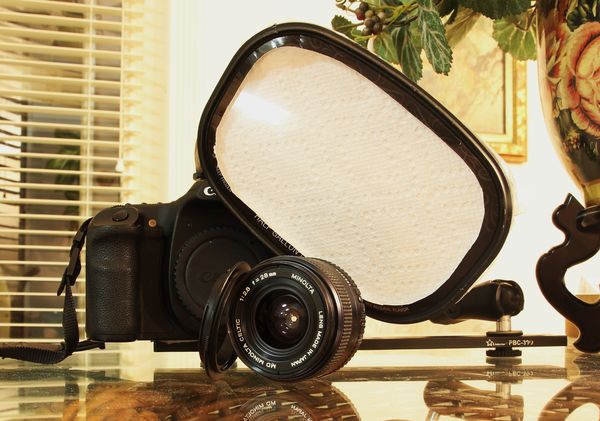
#2 - Reverse-mounted lens
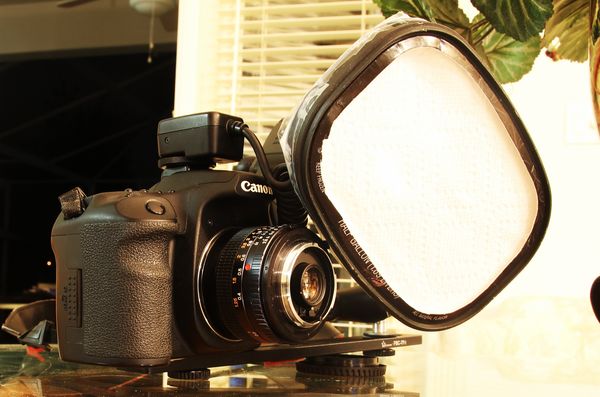
#3 - Lenses & Reversing ring - separated
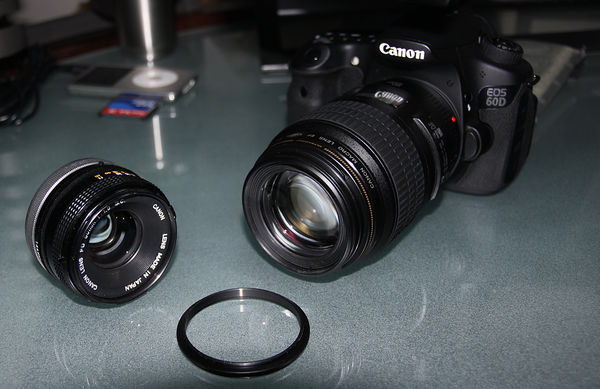
#4 - Stacked lenses - combined
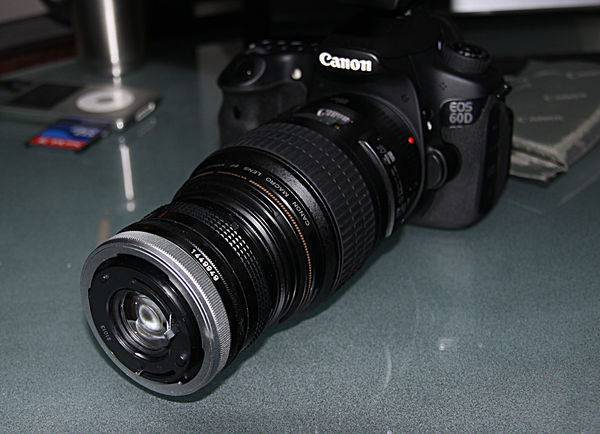
#5 - Nikon BR-6 + standard cable release
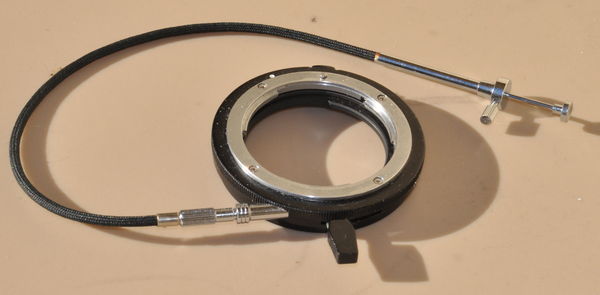
If you want to reply, then register here. Registration is free and your account is created instantly, so you can post right away.
